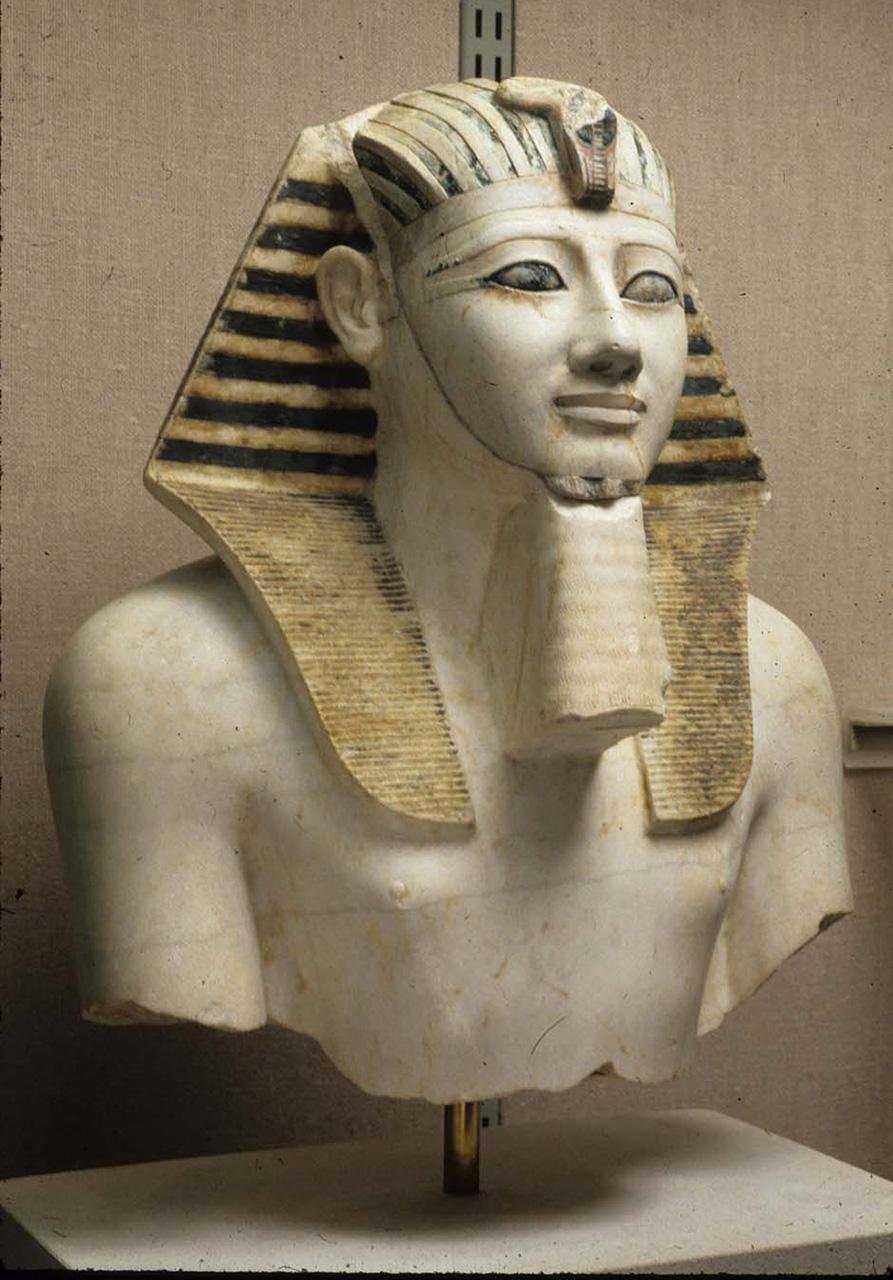Archaeologists working in northeastern Egypt have uncovered the remains of a 3,500-year-old structure believed to be a royal rest house at the Tel Habwa archaeological site in the Northern Sinai region. This discovery sheds light on the strategic importance of the area during the reign of Thutmose III, a prominent pharaoh of ancient Egypt.
 Upper part of a statue of Thutmose III, c.1479–1425 BCE. Credit: Metropolitan Museum of Art
Upper part of a statue of Thutmose III, c.1479–1425 BCE. Credit: Metropolitan Museum of Art
The structure, constructed of mud brick, is thought to have served as a temporary residence for ancient Egyptian forces and possibly even royalty during Thutmose III’s reign, which spanned from approximately 1479 to 1425 BCE. Thutmose III, also known as Thutmose the Great, was renowned for his military campaigns, which significantly expanded Egypt’s empire.
The royal rest house, characterized by two central pillared halls and several adjoining rooms, is believed to have provided a respite for Thutmose III during his military endeavors into the eastern Mediterranean. The layout of the building, along with the scarcity of pottery fragments found inside, suggests that it was not a typical domestic dwelling but rather a place of royal repose.
Dr. Mohamed Ismail Khaled, Secretary General of the Supreme Council of Archaeology, said: “It is likely that this building had been used as a royal respite due to the architectural planning of the building and the scarcity of pottery fractures inside.” This ᴀssertion was supported by the Egyptian Ministry of Tourism and Antiquities, which shared in a translated statement that the structure’s design and interior artifacts indicate its function as a royal retreat.
The Tel Habwa site, situated along the ancient route known as the “Horus Road,” played a crucial role in Egypt’s military strategies. Stretching from Egypt through the Sinai Peninsula into the Gaza Strip, this route was vital for troop movements and military campaigns. Tel Habwa, also referred to as Tharu, now stands as an archaeological site along the Suez Canal, approximately 100 miles northeast of Cairo.
Professor Ramadan Helmy, Director of the North Sinai Archaeology Region and Head of the Mission, elaborated on the significance of the findings, stating, “The building’s dating was established through the analysis of stratigraphic layers, pottery fragments found nearby, and the discovery of two inscribed cranes bearing the name of Thutmose III.”
Excavations at the Tel Habwa site have also revealed evidence of later usage, including burials dating to the Third Intermediate Period. The site transitioned into a cemetery during subsequent dynasties, with various types of locally made pottery discovered in different layers, indicating the interment of children.





